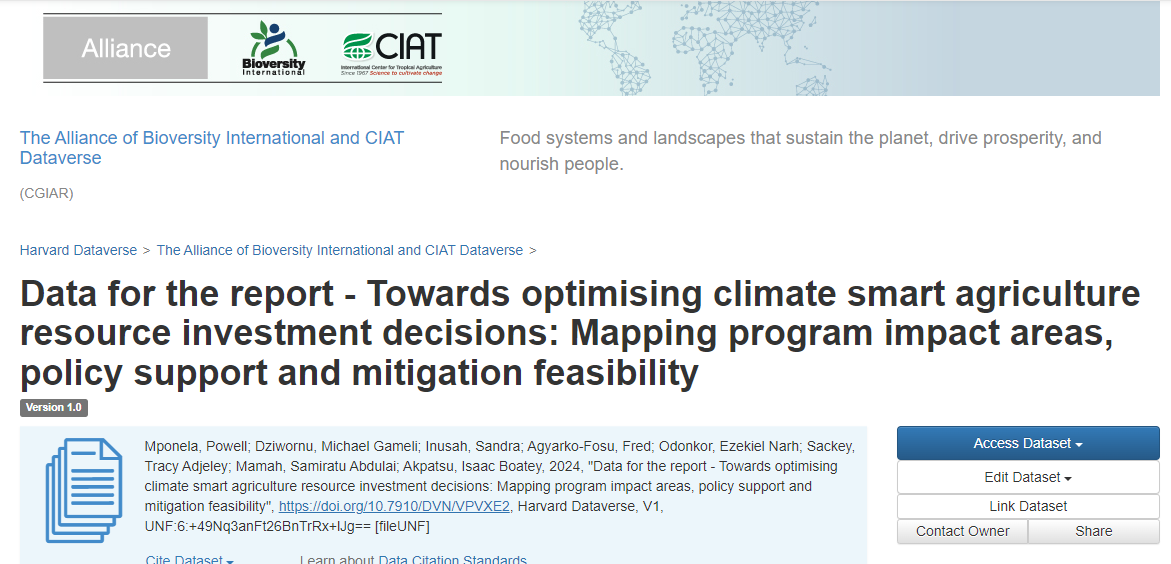Data for the report - Towards optimising climate smart agriculture resource investment decisions: Mapping program impact areas, policy support and mitigation feasibility
This scoping study documents climate-smart agriculture efforts in Ghana, their scalability, and potential resilience impacts. The work fills the gap in CSA use evidence and provides a methodological approach for mapping and evaluating its feasibility. The results provide insights and evidence to support policy formulation, agenda setting and strategy development. As the saying goes, "You can't manage what you can't measure" the paucity of data and evidence on the key aspects of where, when, what, by who on CSA usage hampers implementation. The tendency has been a skewed distribution with some areas receiving more attention while other regions/districts might be sidelined. With the CGIARs Accelerating Impact of Climate Research in Africa (AICCRA) additional financing from the World Bank reported during COP28 focusing more on usage, the Alliance of Bioversity and CIAT in Ghana partnered with the Council for Scientific and Industrial Research - Institute for Scientific and Technological Information (CSIR-INSTI) develop mapping approach, database and compendium of CSAs in Ghana. The scoping study assemble evidence of past investments from government’s budgetary allocations, policies, interventions as well as the contributions of non-governmental organisations.
Metodology:The CSA principles and assessment criteria set by FAO CSA source book and the IPCC Working Group II CSA assessment guided the study design, criteria and reporting framework. The CSAs are mapped for the regions indicating spatial distributions of efforts by government and non-governmental organisations. The distribution of government and NGO projects shows impact and focus areas. The predominance of projects in some regions is indicate of the adaptation need but also due to enabling conditions. The distribution of CSA systems shows the risks that CSA address which is supported by distribution of themes and CSAs. The data also presents the potential and reported impacts of CSAs. The social contributions considered include use and adoption while ecological impacts include nutrient, soil and water conservation. (2024-01)

